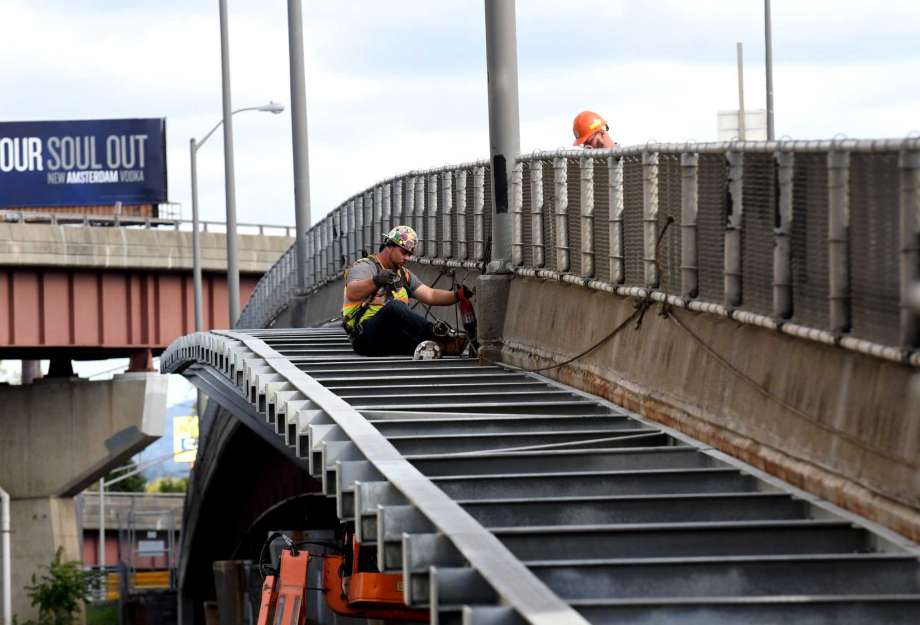
Pedestrian-friendly cities are on the rise, a trend some are calling the new urbanism. At the same time a stronger economy is driving more people to get behind the wheel. Despite technology that makes cars smarter, a report released in 2017 by the Governors Highway Safety Association shows that the number of pedestrians killed in traffic accidents increased 11 percent between 2015-2016. The report states that this is the “biggest single-year increase in pedestrian fatalities ever, and the highest number in more than two decades.” Last month the National Safety Council substantiated the claim, stating that traffic deaths overall increased six percent in 2016.
Organizations of all kinds are working to turn these trends around. One example is Composite Advantage and their unique FiberSPAN-C cantilever sidewalk systems. Cantilever sidewalks are demonstrating their ability to protect pedestrians and bicyclists. Because FRP is high-strength and lightweight, vehicle superstructures can carry the additional load of a cantilever sidewalk. Composite Advantage accelerates construction by prefabricating bridge elements in-house. Pre-assembly also speeds up construction, ensuring high quality parts and reduced installation costs. An FRP deck provides a reduced dead load of 4 to 9 psf. Equipped with a non-slip wear surface, FiberSPAN-C's stringers, deck and railing weigh as little as 13 psf. Owners have the option to add curbs, railing attachments, drainage scuppers and expansion joints.
As President Trump readies a new infrastructure bill, bridge crossings that can deliver cost reductions and safety are more essential than ever, particularly in light of the American Society of Civil Engineers 2017 infrastructure report card. As with the previous report card, America’s cumulative GPA is a D+. Three categories (parks, solid waste and transit) received a lower grade; seven categories (hazardous waste, inland waterways, levees, ports, rail, schools, and wastewater) showed slight improvements. Six category grades remain unchanged since 2013 (aviation, bridges, dams, drinking water, energy and roads).
FiberSPAN-C is an effective component in the infrastructure tool box because, unlike concrete, it can be tailored to meet basic walkway update/replacement protocols. These protocols include the following:
- Sidewalks on bridges should be placed to eliminate to eliminate falls
- Sidewalks should be placed on both sides of bridges
- Under extreme conditions, sidewalks can be used on one side only as long as safe crossings can be provided on both ends of the bridge
- Sidewalks placed on only one side should be wider to accommodate large volumes of pedestrian traffic
With an infrastructure plan designed to take America’s roadways and bridges into the future, the FRP cantilever sidewalk has an important role to play. We’ll get a better feel for that when we take a closer look at the president’s infrastructure budget. To learn more about FiberSPAN-C, register for our free, live webinar, “Share the Road with FRP Cantilever Sidewalks” on Tuesday, February 13, 12 p.m. EST.

